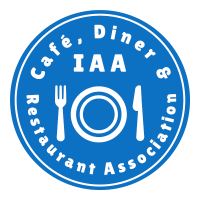Thriving restaurants are the product of dozens, if not hundreds, of small things going right.
It’s all about consistency.
Every diner should get an equally great experience with every visit. If they have a sensational meal, then you better believe they’ll bring their friends and family along next time.
And guess what?
They’ll expect the same great flavor, service, and ambiance as the time before. Delivering consistency comes down to habits, routines, and checklists. A stocked fridge, pantry, and freezer is a must. Clean dishes, fresh napkins, and a clean dining room are essential. And you can’t forget friendly service at the door, on the phone, and at their table.
The only way to make all of that happen is by optimizing human capital. Your schedule needs to be ironclad, so you’ve got a fully trained staff ready and able to handle anything you throw their way.
Any inconsistency in scheduling, working through breaks, or understaffing adds up fast and leaves your team feeling mentally exhausted and spread thin. That state of mind leads to cut corners, mistakes, and lousy service.
On the flip side, if you take your restaurant’s employee scheduling seriously, you’ll see happier servers, heightened morale, greater retention, satisfied customers, and higher profits. Let us show you how:
MAKE YOUR LIFE EASIER WITH THE RIGHT SOFTWARE
Employee scheduling can take hours upon hours when you consider all the variables like personal preferences, vacation, shift cover requests, random holidays, and attrition. It’s no surprise that modern software solutions have solved many of the headaches that come with employee scheduling.
ZoomShift, for example, cuts scheduling down to a fraction of the time thanks to its scheduling templates and drag-and-drop scheduling interface. It also empowers your staff to find coverage for their own shifts, so you don’t have to spend hours calling and emailing down a list to find a replacement.
ZoomShift also notifies everyone when the schedule is up and reminds them when they have an upcoming shift. That means more team accountability and fewer late arrivals and no-shows. Everyone wins.
MAKE PEAK TIMES YOUR PRIORITY
Maximizing your shift staffing ratio won’t happen overnight. Finding the right balance between understaffing to save money and overstaffing to maintain the customer experience takes time. The best thing you can do is follow the Pareto Principle or, as some call it, the 80/20 rule. At its core, the 80/20 rule means figuring out what efforts are yielding the greatest results.
When it comes to employee restaurant scheduling, you should focus upfront on ensuring that peak times are your priority. Like most restaurants, you probably make more money on Fridays and Saturdays than all the other days combined.
In Pareto’s terms, you earn roughly 80% of your profits in two days (28% of the days of the week). On your busiest days, you’ll want to run the numbers and ensure that you’re fully staffed and that the strongest people are there when you need them most.
Schedule these shifts well in advance and remain flexible. The greater the heads up, the less likely you’ll see last-minute change requests.
CARVE OUT TIME FOR SIDE WORK
Peak’s the priority, there’s no denying that. But the day shift is where the magic happens. That’s when you put everything in its place, which is what the French call “mise en place.” That’s when the prep work gets done that makes the dinner rush such a success.
To help find a balance in your staffing ratios, come up with some housekeeping tasks people can do during the slower shift times. Chopping vegetables, marinating meat, making stock, and creating desserts come to mind. But you can’t forget about cleaning, restocking, ordering, and training. Anything that’s typically reserved for the end of the night can likely get a jumpstart before a crowd shows up.
The beauty of side work is it will keep your staff from working too late and ensure you have plenty of people on-site and ready to spring to action if a rush happens.
CRUNCH THE NUMBERS REGULARLY
Every 2-3 months, set aside a little time to compare your labor costs, revenue, and staffing ratios to ensure you’re staffing your shifts as efficiently as possible. Sometimes the tiniest of tweaks to your schedule can snowball into big profits in the long run.
Maybe you don’t need your highest-paid employees on a shift that’s already losing money, or perhaps you can avoid costly overtime by hiring a part-time server a few nights a week. These are the kinds of insights you get when you pause once in a while and truly reflect and compare your revenue and labor costs.
Get your staff involved while you’re at it. They’ll likely have opinions on how you can improve the posting process, enhance the schedule, or optimize certain shifts.
ENSURE EVERYONE GETS A FAIR DEAL
Your staff wants to work high-dollar shifts, and they also want to work day shifts to take it easy. They want balance. Sure, having your best people work more shifts improves the customer experience and strengthens your dinner crowd.
However, you could just as easily burn them out from working them too much. There’s nothing wrong with stacking the deck in your favor, but make sure you check on your top performers and make sure they’re getting what they need.
Even newer employees should get a shot at the busier shifts because it’s the best way to learn and step up when it matters most. While you’re considering everyone’s needs, it’s also worthwhile to revisit the break schedule.
For instance, two days off in a row keeps morale high and ensures that your staff is fully rested and ready for their next shift. It doesn’t have to be weekends since those are peak times, but even two days off in the middle of the week will suffice.
THE BOTTOM LINE
If your restaurant’s scheduling is lacking and you’re searching for ways to make more money, cut unnecessary costs, and improve the customer experience, then chances are your employee schedule is the answer.
Give your dinner rush and weekends priority, and carve out time on the schedule for side work. Run the numbers from time to time to ensure that you’re running a tight ship and that everyone’s getting a fair deal. Finally, do yourself a favor and invest in some premium restaurant employee scheduling software like ZoomShift. Your managers, staff, and customers will thank you.
The post How to Bring Your Restaurant’s Employee Scheduling to the Next Level appeared first on Restaurant Den.



